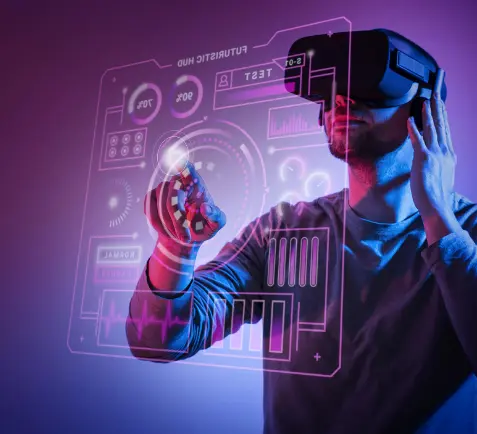Imagine the workplace as a bustling city. Just like urban landscapes evolve with skyscrapers and smart infrastructure, our offices and workflows are being transformed by cutting-edge technology. Remember how Tony Stark, the tech-savvy superhero from the Marvel Universe, uses his AI assistant, JARVIS, to streamline his work and tackle challenges efficiently? Modern workplaces are becoming a bit like Stark Industries, where technology is the hero driving productivity and innovation.
Increased Productivity and Efficiency
One of the most significant effects of new technology is the dramatic boost in productivity and efficiency. According to a study by MIT, companies that have embraced digital transformation are 23% more profitable than their less digitally sophisticated counterparts. Tools like project management software, AI-driven analytics, and cloud computing have streamlined operations, enabling employees to focus on high-value tasks.
For instance, collaboration platforms such as Slack and Microsoft Teams have revolutionized communication within organizations. These tools have reduced the reliance on email, cutting down the average response time and fostering real-time collaboration. As a result, teams are more agile and can respond to challenges faster, ultimately driving better business outcomes.
Hybrid Work Culture and Digital Nomads
The rise of a hybrid work culture and the increasing number of digital nomads are reshaping how we think about work. With advancements in video conferencing, cloud storage, and virtual private networks (VPNs), employees can now work from anywhere, blending in-office and remote work seamlessly.
According to Forbes, the number of digital nomads is projected to grow by 131%, reflecting a significant shift in how and where people choose to work.
The benefits are clear:
- Greater work-life balance: Employees can better manage personal and professional responsibilities.
- Broader talent pool: Companies can hire talent from anywhere, not just their local area.
- Cost savings: Reduced need for office space and associated expenses.
Enhanced Employee Experience
Modern technology has also significantly improved the employee experience. Artificial intelligence (AI) and machine learning (ML) are being utilized to personalize employee interactions and streamline HR processes. Modern technology has also significantly improved the employee experience. Artificial intelligence (AI) and machine learning (ML) are being utilized to personalize employee interactions and streamline HR processes. For example, AI-driven chatbots can handle routine inquiries, allowing HR professionals to focus on more complex issues. To know more, Click Here.
Moreover, the use of data analytics in HR has provided deeper insights into employee engagement and performance. By analyzing data points such as job satisfaction surveys and productivity metrics, companies can proactively address issues and create a more engaging work environment. According to Gallup, businesses with highly engaged teams show 21% greater profitability.
Automation and Artificial Intelligence
Automation and AI are transforming the nature of work itself. By automating repetitive tasks, employees are freed up to engage in more creative and strategic activities. The World Economic Forum predicts that by 2025, automation will displace 85 million legacy jobs, but it will also create 97 million new roles that require more complex problem-solving and human-centric skills.
In the finance sector, for example, robotic process automation (RPA) is used to handle tasks such as invoice processing and compliance checks. This not only reduces the likelihood of human error but also speeds up processes, saving time and reducing costs.
Cybersecurity and Data Privacy
As the reliance on digital tools increases, so does the importance of cybersecurity and data privacy. Modern workplaces are investing heavily in cybersecurity measures to protect sensitive information. According to Cybercrime Magazine, global spending on cybersecurity is expected to exceed $1.75 trillion cumulatively over the five years from 2021 to 2025.
Implementing robust cybersecurity protocols, regular training for employees on data privacy, and employing advanced technologies like blockchain for secure transactions are some ways organizations are safeguarding their data.
Conclusion
The impact of new technology on the modern workplace is undeniable. Technology modernization is a driving force behind these changes, from increasing productivity and enabling remote work to enhancing the employee experience and ensuring data security. Organizations that embrace these technological advancements are staying competitive and creating more dynamic and resilient work environments. As we navigate this digital era, the focus should be on leveraging technology to foster innovation, collaboration, and growth.
Knowledge thats worth delivered in your inbox





